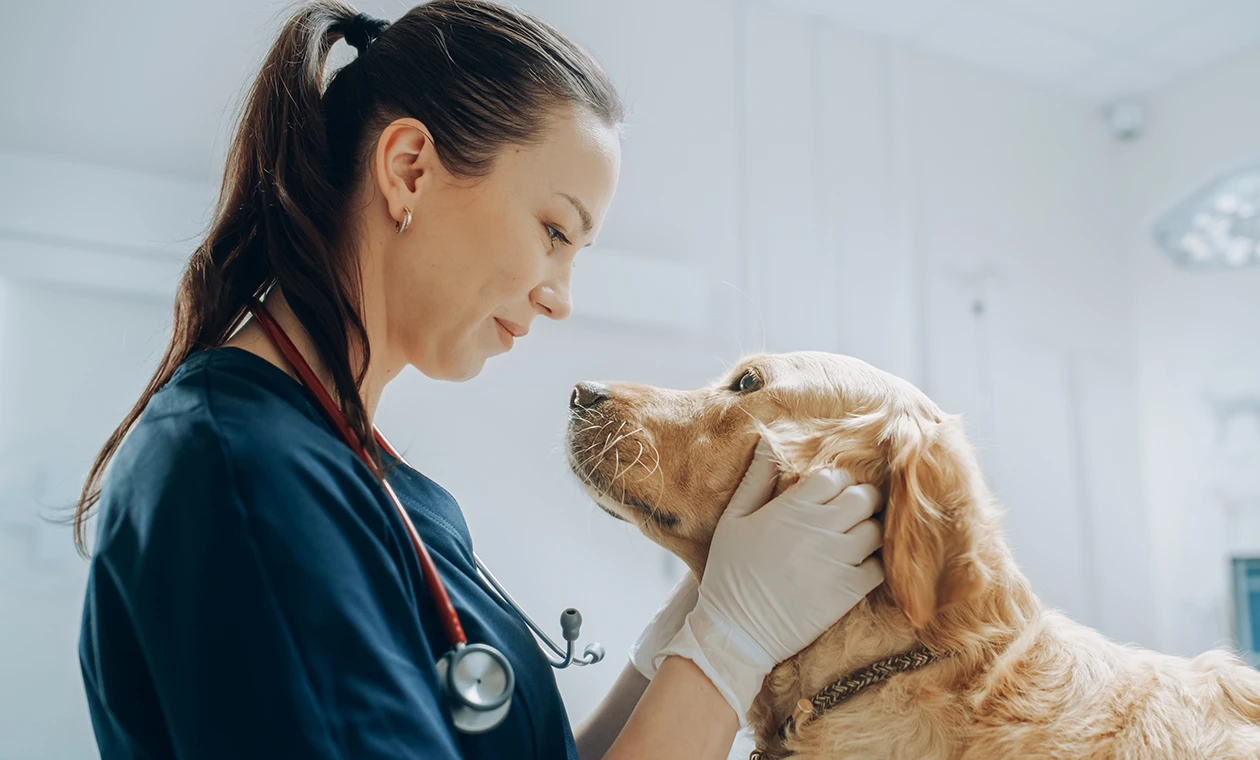

This topic explores the signs of cognitive dysfunction syndrome (CDS) in pets, how it impacts their daily lives, and what supportive measures pet owners can take to improve their pets’ quality of life. We’ll discuss what is known about underlying causes, diagnosis, environmental enrichment strategies, dietary and supplement options backed by scientific evidence, and how structured routines can help slow progression. Additionally, we’ll cover the emotional challenges of caregiving and provide guidance on when to have difficult but necessary conversations about long-term management and quality of life. This session is designed to empower you to support your clients with practical tools to support their pets with canine and feline cognitive dysfunction syndrome.
The veterinary profession, marked by high demands and intense pressures, has seen a noticeable decline in the confidence of early-career practitioners. This presentation addresses the erosion of self-belief among veterinary professionals and proposes actionable strategies for rebuilding confidence. The session will explore the roots of diminished confidence, including the impacts of chronic stress, fear of failure, and the ever-increasing expectations of early-career veterinarians. As we hold up the mirror to our profession and ask, “Where has the confidence gone or did we never have it to begin with?” we have to recognize that the effects of a lack of self-confidence are profound, affecting decision-making, job satisfaction, and mental health. This session is critical as it seeks to empower veterinarians by restoring their self-belief, enhancing their professional efficacy, and improving their overall well-being. “Where Has All the Confidence Gone?” is not just a question but a call to action for veterinary professionals. By addressing this issue head-on, this presentation will provide early career veterinarians and students with the tools they need to reclaim their confidence and continue to thrive in their demanding careers.
Seizure disorders represent a complex challenge in veterinary neurology, requiring multiple considerations to be taken into account for each individual seizure patient. This presentation aims to explore the clinical reasoning process when developing etiological differentials and therapeutic modalities for seizure disorders, with particular emphasis on scenarios where advanced diagnostic tools may be limited or unavailable. During this hour, the presenter will challenge the dogma of “seizure protocols,” highlighting the individual variation between patients and clients in veterinary medicine. The agenda of this in-depth discourse includes discussing pertinent parameters and co-morbidities that influence decision-making factors, underscoring their significance in tailoring therapeutic intervention to individual patients. This session’s import is encouraging practitioners to engage in decision-making at the individual patient level while recognizing prevailing challenges and pitfalls in seizure therapy within the general practice setting. Examples used within this session are gleaned from the presenter’s experience in teleconsulting directly with general practitioners. This session hopes to offer invaluable insights to professionals in the veterinary medicine field, from seasoned practitioners to recent graduates and students; attendees stand to benefit from a refined understanding of clinical reasoning with seizure cases informed by the latest scientific developments while operating within real-world limitations. Armed with the insights from this session, practitioners will be better positioned to approach seizure disorders with a structured, scientifically informed strategy that highlights the individuality of patient care and client limitations.
Vestibular syndrome etiologies are often challenging to differentiate and diagnose without advanced imaging. Discerning clues from exams and initial diagnostics can help practitioners provide supporting evidence for or against their preliminary diagnosis. When faced with such dizzying differentials, the true challenge lies in the clinician’s ability to think methodically, discern astutely, and utilize readily available tools for an effective preliminary diagnosis. This session will offer a short primer on the intricate anatomy and physiology of the vestibular apparatus, laying a foundational understanding for the subsequent differentials while dissecting various vestibular conditions, focusing on discernable clinical manifestations and their implications and working through clinical reasoning to comprehensively elucidate possible etiologies, from infectious agents and inflammatory causes to traumas and toxins, and how they might present in a general practice setting. This presentation focuses on critical thinking and clinical reasoning, prioritizing differential diagnoses based on clinical presentation, patient history, and risk factors. In the realm of veterinary medicine, where advanced diagnostics might not always be accessible or feasible, the power of clinical reasoning takes center stage. This session is curated for both novice and seasoned veterinarians, promoting a keen analytical mindset and pragmatic approach. Attendees will depart with a refined toolkit: a blend of theoretical knowledge and actionable strategies to discern better and manage vestibular syndrome’s dizzying differentials confidently while appreciating the limitations they may encounter.
This interactive lecture will focus on enhancing clinical reasoning skills in diagnosing brain diseases in veterinary patients, with an emphasis on what can realistically be done in general practice. Using case-based discussions, participants will refine their approach to neuroanatomic localization and learn to generate appropriate differential diagnoses based on patient signalment and progression of clinical signs. We will also discuss practical diagnostic and treatment options when advanced imaging or referral is not immediately available.
This interactive lecture will focus on enhancing clinical reasoning skills in diagnosing spine diseases in veterinary patients, with an emphasis on what can realistically be done in general practice. Using case-based discussions generates appropriate differential diagnoses based on patient signalment, history, and progression of clinical signs. We will also discuss practical diagnostic and treatment options when advanced imaging or referral is not immediately available.

Learn how to properly utilize hematologic data including reticulocyte counts, red cell indices, leukocyte data and dot plots to save more patients!
Dot plots and blood film morphology are generated by newer, more advanced hematology analyzers and are extremely helpful with common cases. Learn the 5 most common dot plots and critical blood film morphology findings and become a better diagnostician!
Challenge yourself using laboratory data including hematology, biochemical profiles, electrolytes, urinalysis and other tests. This session presents an anemic patient for evaluation.
Inflammatory disease is commonly encountered in practice and frequently missed. Learn how to properly interpret leukogram changes using real case presentations. Don’t miss this important lecture!
This case challenge series will test your diagnostic skills and highlight important “pearls” you don’t ever want to forget in practice.
Clinical pathology of cats is much different than dogs, so you better attend this seminar if you work on cats. Learn how to use newer tests and save more kitties!
Description coming soon…

Hair loss in dogs and cats can be a common presenting problem in dermatology. Discover how to progress in your diagnostic steps and treatment options.
In an age when so many tools are available to treat allergic itching, this lecture will review common canine and feline diseases unrelated to allergies, how to detect then and treatment options.
Discover what types of skin diseases are specific to cats, how to detect them and provide updated treatment options.
This lecture will provide information related to dermatologic challenges in diagnostics, treatments and how to look critically at dermatologic testing methods.

Intestinal anastomosis – tips to make it easier
When performing an intestinal resection and anastomosis by yourself (i.e., no assistant to help!) there are several ‘tips’ that may make life easier for you. I will suggest a number of alternative techniques that you can consider incorporating into your current technique to make this common procedure easier and safer. Video of clinical cases will be used to illustrate these techniques.
Feline perineal urethrostomy – a novel approach
Feline perineal urethrostomy has classically been approached with the patient placed in a perineal position. Although this positioning is awkward for the surgeon it has become the standard approach. This lecture will suggest taking another look at patient positioning. Placing the cat in dorsal recumbancy allows for a much more ‘ergonomic’ approach for the surgeon and enhances visualization of the regional anatomy. Video of this novel approach will be used to illustrate its advantages to the perineal approach.
Scrotal urethrostomy in the dog
Occasionally calculi completely obstruct the urethra and cannot be retropulsed into the bladder. A urethrotomy or urethrostomy procedure may be necessary. This session will illustrate the technique used for removal of urethral calculi from male dogs via urethrotomy. The authors’s preferred technique for permanent urethrostomy will also be illustrated. Video of clinical cases will be used to illustrate all surgical techniques.
This seminar will focus primarily on the surgical management of GDV patients. Video of clinical cases during intraoperative decision making will be presented. We will focus on the authors’ preferred method for gastric derotation and the technical aspects of performing a 15-minute incisional gastropexy. Extensive use of video of clinical cases will give participants a real-life experience.
Colopexy for the treatment of recurrent rectal prolapse
Patients that present with chronic recurrent rectal prolapse can be difficult to medically manage. Permanent reduction of the rectal prolapse can be performed by suturing the colon to the body wall. This session will describe a technique that results in a permanent fibrous connective tissue scar between the colonic wall and body wall. Video of a clinical case will be used to illustrate the technique.
Anal sacculectomy: a novel approach
Anal sacculectomy is frequently performed in veterinary practice. It can be tricky to get all of the anal sac epithelium and preserve the external anal sphincter muscle and caudal rectal nerve. A ‘novel’ technique has been suggested that allows the surgeon full control of the perianal anatomy and thus preservation of vital structures during anal sac resection. This technique facilitates complete removal of the anal sac while encouraging protection of caudal rectal nerve fibers and external anal sphincter muscle. Video showing this technique in a clinical case will illustrate its potential usefulness in your practice.
A ‘never fail’ technique for retropulsion of calculi lodged in the urethra of male dogs will be presented. Surgical management of cystic calculi will be discussed and a new protocol that will eliminate the possibility of leaving a stone behind after performing a cystotomy to retrieve multiple cystic calculi will be described. Videotape of clinical cases will be used to illustrate all techniques.
Surgical management of brachycephalic syndrome
This session will discuss the management of upper airway obstruction in brachycephalic breeds. Emphasis will be placed on an update of the nasoplasty technique and soft palate resection. This seminar will focus on hand suturing techniques. Videotape of clinical cases will be used to illustrate surgical techniques.
The 4-ligature splenectomy
Years ago the anatomist suggested that in order to safely remove the spleen the left gastroepiploic artery and vein must be preserved or the gastric blood supply would be severely compromised. We now know this is not true! I will suggest a way to use this new anatomical information to safely remove the spleen in a non-GDV patient using 4 (maybe 5!) ligations. Video of a patient with a bleeding splenic hemangiosarcoma will be used to illustrate the anatomy.

Laboratory interpretation and a basic approach of how to work up a case with abnormal liver enzymes will be presented. When is a liver biopsy indicated, what to expect and how to interpret the results?
New insights into diagnosis and management of reactive hepatopathies; the most common cause for abnormal liver enzymes. We will also discuss conditions associated with an elevated alkaline phosphatase in the dog.
The diagnosis and etiologies of hepatitis will be discussed with emphasis on diagnosis and treatment. Recent breed-associated hepatitis as well as copper associated hepatitis will be presented. These conditions are more common than you may think.
A brief review of very common liver problems including gallbladder mucocele, microvascular dysplasia, ductal plate abnormalities. Diagnosis, prognosis and treatment will be covered.
Acute Liver Disease; Diagnosis and Management.
Acute liver disease is often associated with toxin or drug induced changes. The causes and management of acute liver disease will be presented including important liver support therapies such as NAC, SAMe and milk thistle.
Acute Pancreatitis in the Dog; Diagnostics and Treatments.
An overview of current thoughts on the diagnosis and therapy of acute pancreatitis in the dog. The role of the new pancreatitis tests, pain management, antiemetics, nutrition and use of Fluzapladib will be included.
Update on Feline Liver disease.
A review of feline liver disease with new information on diagnosis or therapy specific to cats including lipidosis and cholangitis. Management of bacterial cholangitis and the risk factors will be emphasized. What is feline triaditis? – we will explore this syndrome and management of these cases